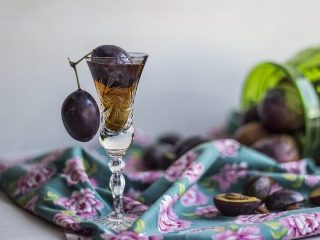Content
The disappointment of any decent housewife will know no bounds if she has to throw away old candied jam or preserves, just to make room in the cellar or pantry for new, fresh preparations. Many people still don’t know that it can be used to make delicious homemade wine, and not just the famous moonshine, which not everyone likes.
This wine can be made from absolutely any variety. jam, the main thing is that there are no signs of mold on it. Only mold should force you to throw such a piece into the trash bin, because even if you remove the top part with it, then nothing decent can come out of the remaining jam.
All fruits and berries are good in their own way, but homemade wine made from plum jam is distinguished not only by its noble color shade, but also by its exquisite, slightly tart taste and enchanting aroma.
In addition, the recipes for its preparation are quite simple and even a beginner who has never had to try his hand at winemaking before can cope with them.
The simplest way
The simplest option for making homemade plum wine from candied jam is to mix warm boiled water (about +25°+30°C) and jam in equal proportions and, putting a rubber glove or a balloon with a small hole on the container, place for fermentation in a dark, warm place. With a standard recipe, the process is usually completed within 30 to 50 days when the glove or balloon is deflated. You can try the wine.
Ingredients to improve fermentation
Unfortunately, wine prepared according to the above method does not always qualify for a delicious taste. Much depends on the amount of sugars it contains, and sometimes the fermentation process does not begin at all, because the future wine lacks certain yeast microorganisms and the drink turns sour.
Therefore, various auxiliary additives are used much more often to improve the fermentation process. It can be:
- Wine yeast, and in the absence of such, even ordinary baker’s yeast;
- Any fresh berries or fresh grapes;
- Raisin;
- Rice.
You need to take 20 grams of live yeast per liter of jam. Usually they are dissolved in one liter of warm water and mixed with plum jam.
In this case, you first need to prepare the yeast starter. To do this, 8-10 g of dry yeast are mixed with 100 g of warm water and left for several hours in a warm place. In the future, this amount of starter can be used to make homemade wine from one liter of plum jam.
The easiest way to use fresh berries or even grapes as a fermentation accelerator in the summer.It is enough to add 200 grams of berries to 1 liter of old jam. It is not recommended to wash the berries before use, but thoroughly chopping them will promote good fermentation.
Raisins are most often used to make wine from plum jam at home. After all, when using a recipe with raisins, wine can be prepared even in the season when there are no longer fresh grapes or other fresh berries. It is also impossible to wash raisins, because on their surface, as in the case of fresh berries, wild natural yeast microorganisms are preserved, which will contribute to the full completion of the fermentation process.
Finally, an interesting ingredient that promotes fermentation and comes to us from oriental cuisine is rice. It should also not be washed before adding it to future wine for the same reasons stated above. One glass of rice is enough for one liter of plum jam.
Technology for making homemade wine from jam
As in the original recipe, first mix plum jam and boiled warm water in equal proportions. Then the necessary auxiliary ingredient of your choice from the above is added to them. Of course, the taste of the finished wine will differ depending on what exactly you use to improve fermentation, but for the first time it is worth trying to add what you have on hand.
The resulting mixture is poured into a clean container (preferably glass), a rubber glove is put on top and the future wine is placed in a warm place without light for 12-14 days. After this period, all the pulp (pulp) should rise to the surface. It will need to be carefully removed and the remaining liquid filtered into a clean and dry container. The glove is again put on the neck of the vessel, and the fermentation process continues for about 30-40 days under the same conditions. When the gauntlet finally falls, the basic process of making homemade wine can be considered complete. The resulting wine is carefully filtered through cheesecloth or drained from the sediment using special thin transparent tubes.
For storage, it is poured into sterile and dry glass containers and hermetically sealed.
Wine made from fermented plum jam
Strange as it may sound, it is from already fermented jam that the most delicious wine is obtained, because in this case fermentation has been going on for a long time, albeit at a slow pace. And each fruit manages to fill the future wine with its taste and unique aroma.
For example, if you take a liter of fermented jam, then you need to add a liter of warm boiled water, 1 tablespoon of raisins and 180 grams of sugar. At the first stage of making wine according to this recipe, you need to add only half the required amount of sugar to the remaining ingredients - 90 grams. Fill the jars where fermentation will take place no more than halfway, as fermentation can be very violent. Otherwise, follow the already familiar scenario.
After two weeks of intensive fermentation, the future wine is separated from the pulp, the rest of the granulated sugar is added, poured into a clean jar and again put with a glove on for fermentation in a warm place in the dark. In this form, a jar of wine can last from one to three months. Only after complete fermentation can the wine be considered ready. It is carefully separated from the sediment at the bottom, poured into dry bottles and stored hermetically sealed.
Features of making homemade wine
For beginners, it will be useful to learn a few basic features that should be taken into account when making wine at home from plum jam.
- All containers you use for winemaking should be sterilized and thoroughly dried with a hair dryer. This will destroy all harmful microflora that can disrupt the fermentation process or spoil the taste of the finished wine.
- The temperature of the water you use to dilute the jam should not exceed +40°C, and it is better to use cooled boiled water.
- When choosing ingredients to improve the quality of fermentation, it is worth keeping in mind that rice goes best with light-colored drinks, while raisins and grapes are ideal for dark-colored wine.
- It is not recommended to use plastic containers for fermentation and storage of finished homemade wine, since the alcohol formed during the fermentation process can react with the plastic and release toxic substances. It is best to store wine in glass or wooden containers.
It seems that such an excellent utilization of a seemingly hopelessly outdated or spoiled product, like preparing a tasty and healthy drink from old jam, should please any thrifty housewife.In addition, this process requires a minimal investment of effort, time and additional resources.















